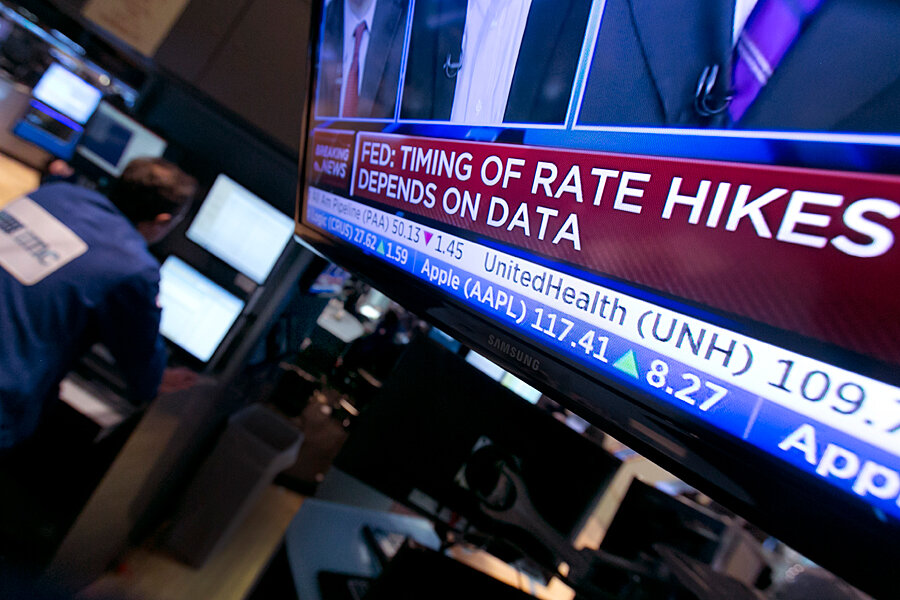Fed signals no rate hike until job market improves, opens door for June
Loading...
| Washington
The Federal Reserve signaled Wednesday that it needs to see further improvement in the job market and higher inflation before it raises interest rates from record lows.
At the same time, the Fed at least opened the door to a rate increase later this year by no longer saying it will be "patient" in starting to raise its benchmark rate.
The statement the Fed issued after its latest policy meeting appeared to catch investors by surprise in suggesting that a rate increase might be further off than many had assumed. Stock prices rose and bond yields fell in the minutes after the news.
The Fed has kept its key short-term rate near zero since late 2008 to bolster the economy after a devastating financial crisis and recession. In its statement, the Fed noted that the economy, which it had previously said was expanding solidly, has "moderated somewhat."
Since December, the Fed had said it could be "patient" in beginning to raise its benchmark rate from near zero. Most analysts said that dropping "patient" from its statement would signal that the Fed was moving toward a rate increase, perhaps as soon as June, given the strengthening job market. A rate hike would ripple through the economy and could slow borrowing and possibly squeeze stocks and bonds.
But other economists had said that even if the Fed dropped "patient," any rate increase would reflect the latest data and that the Fed would remain flexible. Key sectors of the economy have been less than robust of late, and inflation remains far below the Fed's target rate.
Dan Greenhaus, chief strategist at BTIG, said the statement lowered the odds of June rate hike.
"What's important about this part of the statement is that it clearly says the FOMC is looking for 'further' improvement, meaning the economy and labor market have not yet met whatever criteria necessary to warrant a rate hike," Greenhaus said in a note to clients.
In testimony to Congress last month, Yellen cautioned that even when "patient" is dropped, it won't necessarily signal an imminent rate hike — only that the Fed will think the economy has improved enough for it to consider a rate increase on a "meeting-by-meeting basis."
A complicating factor is a surging U.S. dollar, which is helping keep inflation excessively low and posing a threat to U.S. corporate profits and possibly to the economy. A rate increase could send the dollar even higher. Nervous investors have been selling stocks out of concern that a rate increase is coming soon.
Historically, the Fed raises rates as the economy strengthens in order to control growth and prevent inflation from overheating. Over the past 12 months, U.S. employers have added a solid 200,000-plus jobs every month. And unemployment has reached a seven-year low of 5.5 percent, the top of the range the Fed has said is consistent with a healthy economy.
The trouble is that the Fed isn't meeting its other major policy goal — achieving stable inflation, which it defines as annual price increases of around 2 percent. According to the Fed's preferred inflation gauge, prices rose just 0.2 percent over the past 12 months. In part, excessively low U.S. inflation reflects sinking energy prices and the dollar's rising value, which lowers the prices of goods imported to the United States.
It isn't just inflation that remains below optimal levels. Though the job market has been strong, the overall economy has yet to regain full health. The economy slowed to a tepid 2.2 percent annual rate in the October-December quarter, and economists generally think the current quarter might be even weaker.
Manufacturers are struggling with falling exports, the housing recovery remains slow and consumers — the drivers of the economy — have seemed reluctant to spend their windfall savings from cheaper energy. What's more, pay for many workers remains stagnant, and there are 6.6 million part-timers who can't find full-time jobs — nearly 50 percent more than in 2007, before the recession began.
Some analysts have downgraded their outlook for growth in the first three months of 2015. The forecasting firm Macroeconomic Advisers projects growth an annualized rate of just 1.6 percent in the first quarter, down sharply from 2.2 percent in the final three months of 2014 and from a galloping 4.8 percent rate over the spring and summer.
Auto production has also slowed and is holding down overall factory output. Economists say additional consumer spending would be needed for factories to ramp up production.
The optimistic view is that continued strong hiring will produce pay increases and broader economic strength in coming months.







